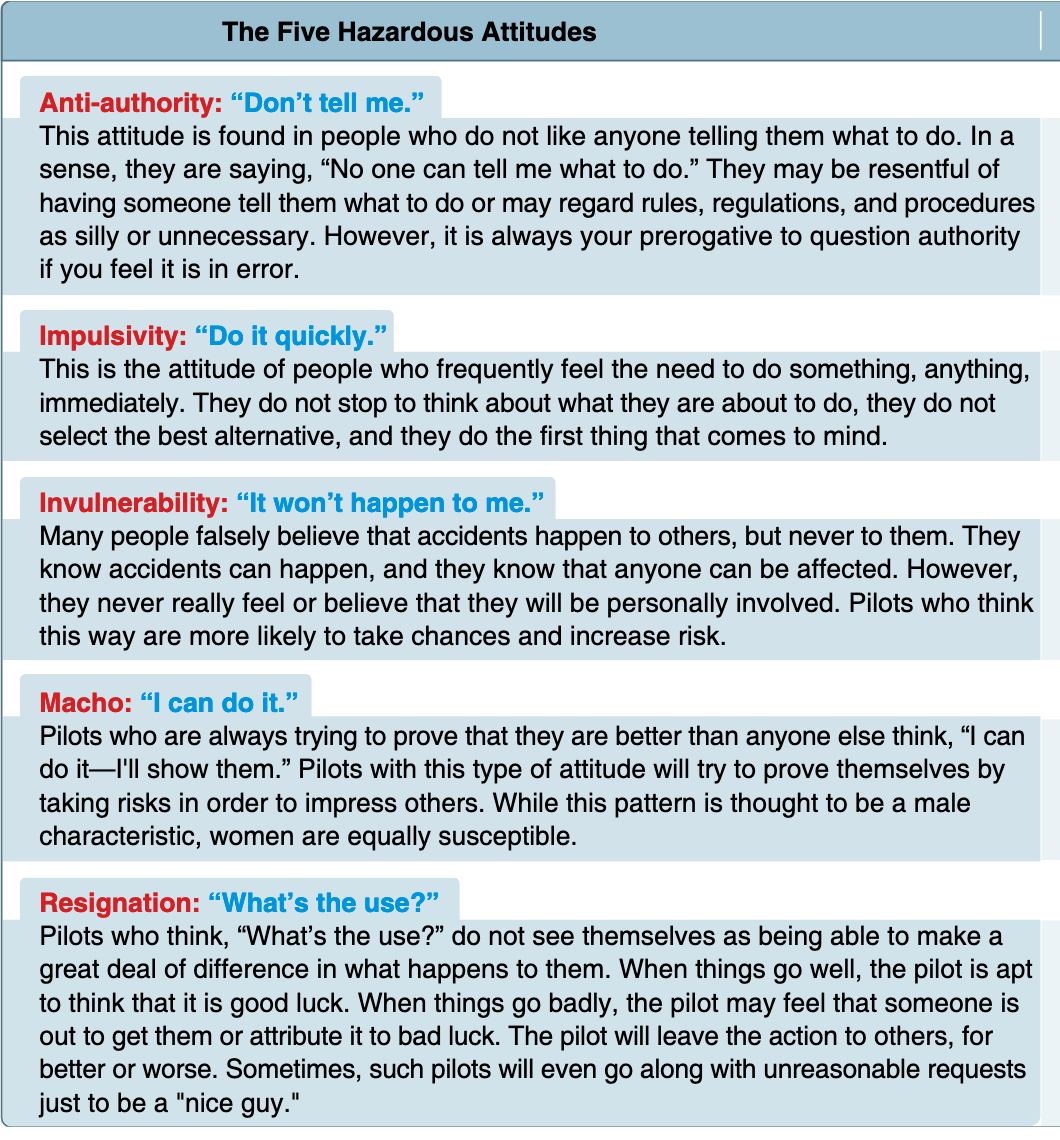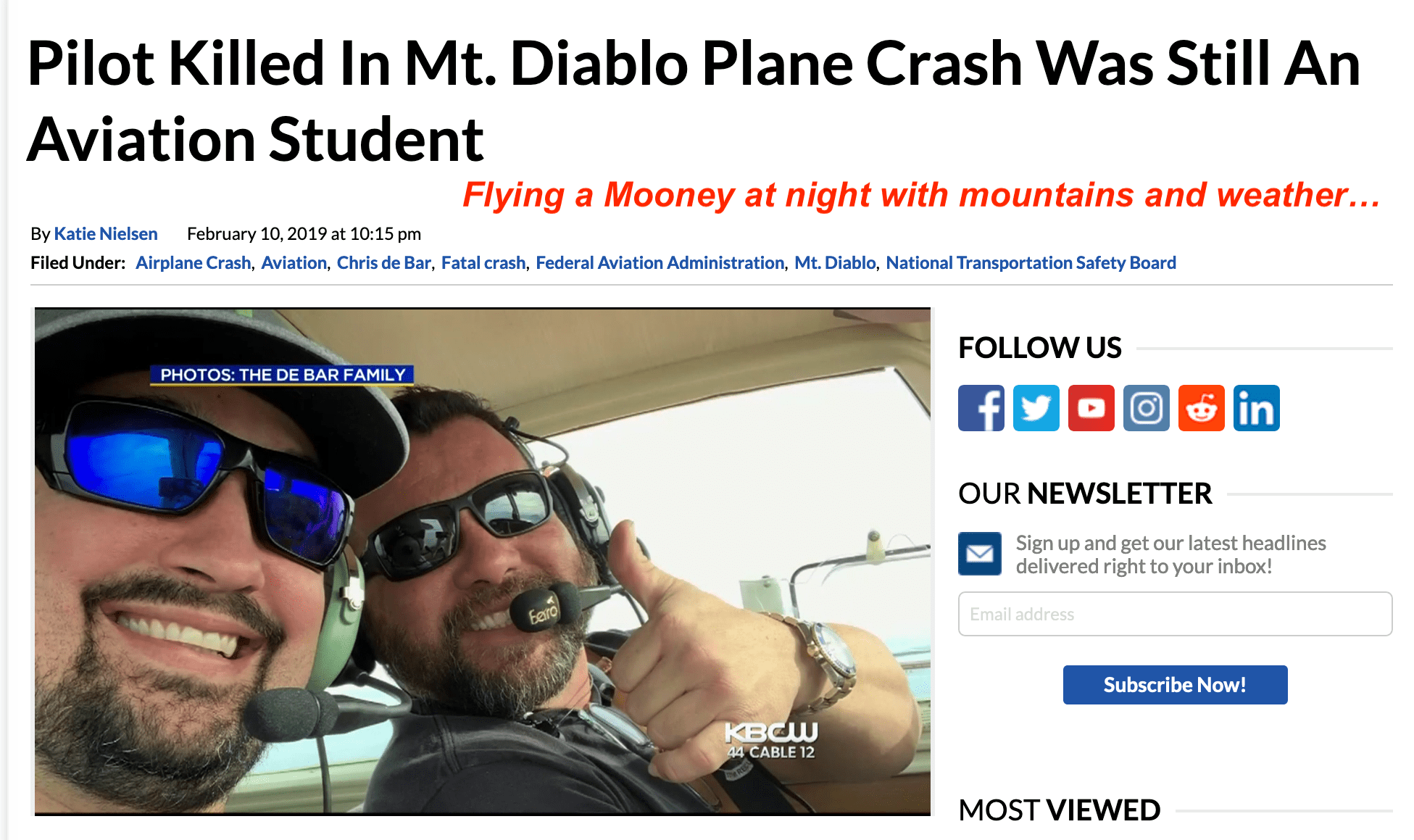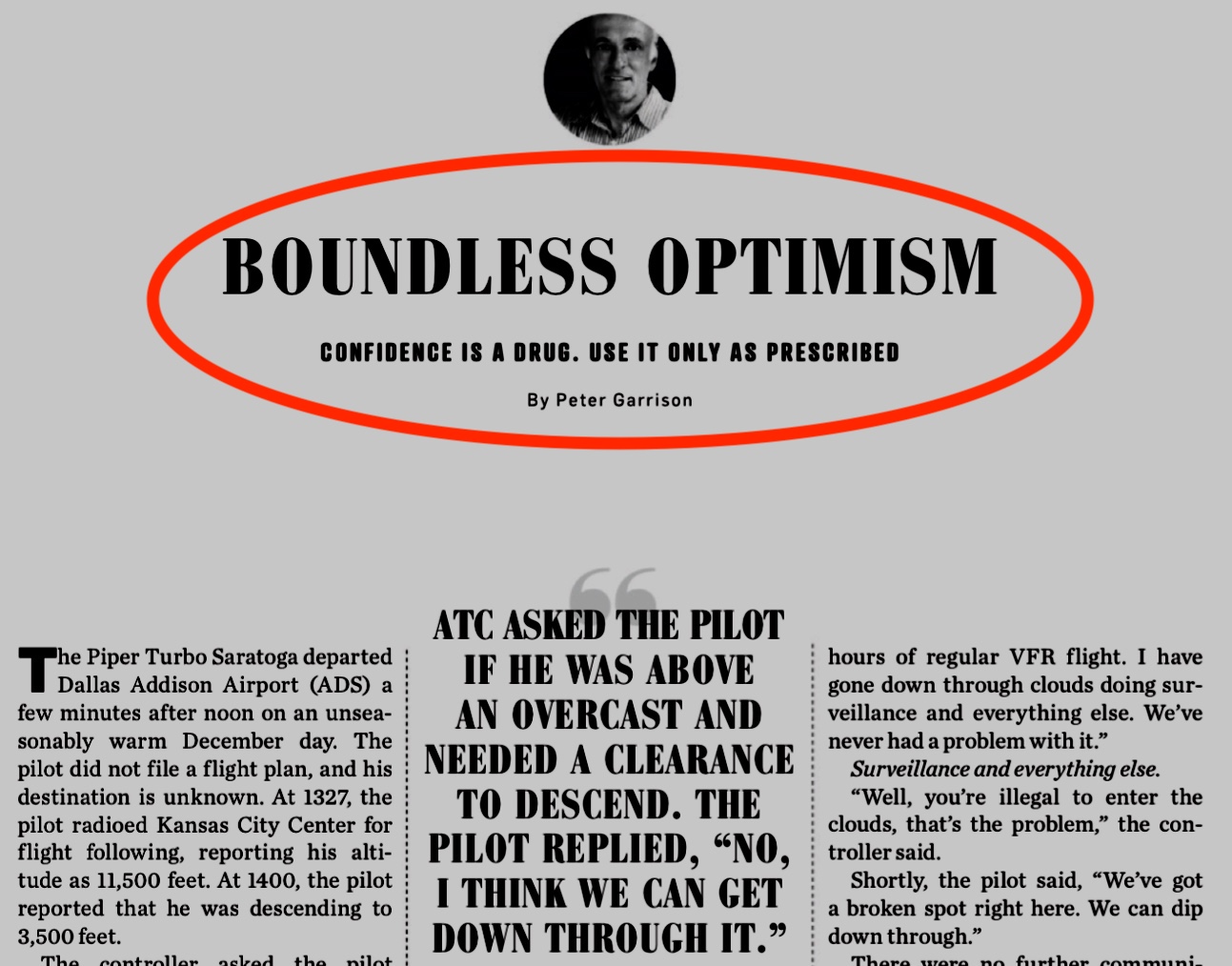More than 100 people die every day on the US roads in their automobiles. An active co-conspirator in this carnage is the fact that 90% of drivers believe they are “better than average.” As a species humans are notoriously overconfident! Perhaps this trait keeps us humans forging ahead and accomplishing amazing things but it sure leads to a lot of fatal accidents in mechanized devices. We need to recognize this hazard in flight training and manage it during every preflight assessment. I-M-S-A-F-E-(C)?
 Overconfidence is not specifically recognized as a “hazardous attitude,” by the FAA but lies somewhere between invulnerability and macho (and is also well represented in our pilot population). Calibrating our confidence is critical in every pre-flight self-assessment. Pilots do some crazy things in planes and seem to just believe/hope it will work out – hope is never a good planning strategy! Every aviation educator should be alert for overconfidence in their students, it is a sure killer and seems to be increasingly popular (or is that just YouTube making bad judgment manifest?) When you read articles like the accident below, consider how many endorsements a CFI has to put into this student’s logbook to make this flight remotely legal.
Overconfidence is not specifically recognized as a “hazardous attitude,” by the FAA but lies somewhere between invulnerability and macho (and is also well represented in our pilot population). Calibrating our confidence is critical in every pre-flight self-assessment. Pilots do some crazy things in planes and seem to just believe/hope it will work out – hope is never a good planning strategy! Every aviation educator should be alert for overconfidence in their students, it is a sure killer and seems to be increasingly popular (or is that just YouTube making bad judgment manifest?) When you read articles like the accident below, consider how many endorsements a CFI has to put into this student’s logbook to make this flight remotely legal.
 One of my mentors in aviation flew 125 combat missions over Vietnam. Among his “flight rules” he counsels that every flight needs to start by consciously encouraging some fear and doubt. The “premeditation of evils” sharpens our situational awareness and maintains vigilance. At a minimum, every flight should at least begin in “code yellow.” This is, of course, easier when you are dodging SAMS but not too common in our daily “fun flying.” Complete a full briefing and add some “healthy doubt” to every flight.
One of my mentors in aviation flew 125 combat missions over Vietnam. Among his “flight rules” he counsels that every flight needs to start by consciously encouraging some fear and doubt. The “premeditation of evils” sharpens our situational awareness and maintains vigilance. At a minimum, every flight should at least begin in “code yellow.” This is, of course, easier when you are dodging SAMS but not too common in our daily “fun flying.” Complete a full briefing and add some “healthy doubt” to every flight.
 Peter Garrison’s “Aftermath” column in Flying Magazine this month is a shocking , over-the-top, tale of misplaced optimism. (App direct link HERE) This article starts almost predictably with the classic VFR pilot caught over a solid overcast; hoping to find a hole. However, deeper examination reveals the “pilot” (in a turbo Saratoga) was not even certificated as a pilot, but just a student with slightly over 2 hours of instruction logged. He just bought an airplane and started flying. The fatal result was pretty predictable and definitely preventable. In cases like this it seems incumbent upon the aviation educator to alert authorities before the inevitable occurs. Both of these pilots could be alive today if someone said something and stopped the process.
Peter Garrison’s “Aftermath” column in Flying Magazine this month is a shocking , over-the-top, tale of misplaced optimism. (App direct link HERE) This article starts almost predictably with the classic VFR pilot caught over a solid overcast; hoping to find a hole. However, deeper examination reveals the “pilot” (in a turbo Saratoga) was not even certificated as a pilot, but just a student with slightly over 2 hours of instruction logged. He just bought an airplane and started flying. The fatal result was pretty predictable and definitely preventable. In cases like this it seems incumbent upon the aviation educator to alert authorities before the inevitable occurs. Both of these pilots could be alive today if someone said something and stopped the process.
Attitudes are notoriously difficult to shape as an educator. Running a busy flight training operation for 25 years, despite our best efforts, we had to “uninvite” a few people who just could not face the reality of managing risk and were a danger to themselves and the rest of the group. Rick Durden wrote a great article on this dilemma in flying clubs; painful but necessary.
 Enjoy spring and visit SAFE at the AOPA Fly-In at Frederick, MD May 9&10. This will be a bigger event celebrating AOPA’s 80th anniversary – we are at booth #52. Fly safely (and often)!
Enjoy spring and visit SAFE at the AOPA Fly-In at Frederick, MD May 9&10. This will be a bigger event celebrating AOPA’s 80th anniversary – we are at booth #52. Fly safely (and often)!

Join SAFE to support our safety mission of generating aviation excellence in teaching and flying. Our amazing member benefits pay back your contribution (1/3 off your ForeFlight subscription)! Our FREE SAFE Toolkit App puts required pilot endorsements and experience requirements right on your smartphone and facilitate CFI+DPE teamwork. Our CFI insurance was developed specifically for CFI professionals (and is the best value in the business).
